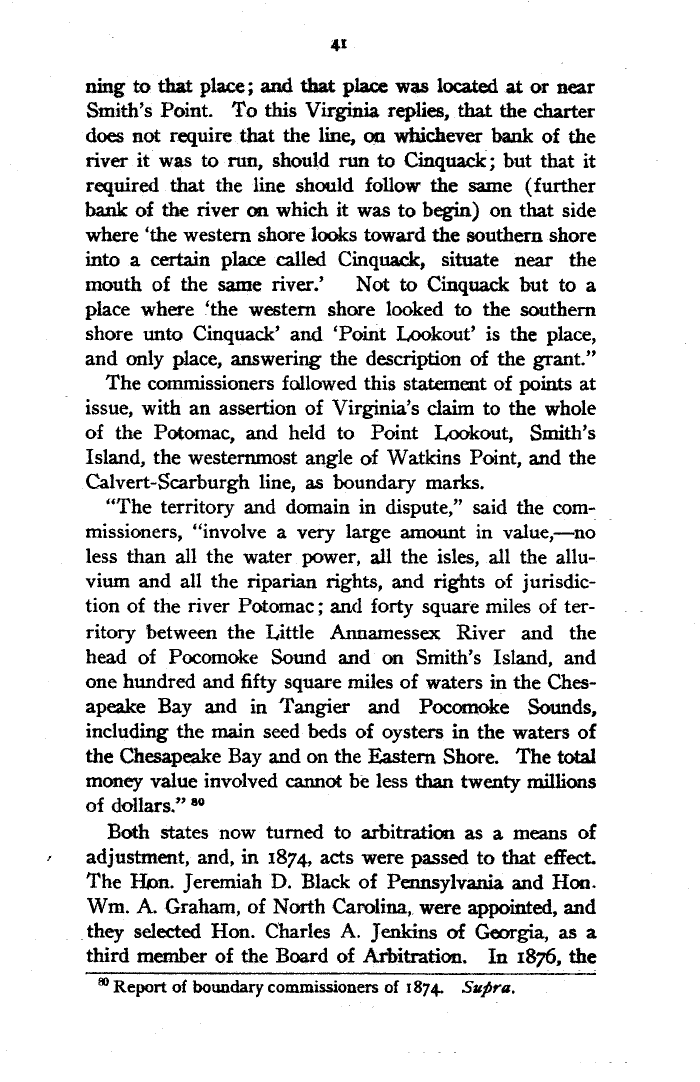| 4=
ring to that place; and that plate was logy at or near
Smith's Paint. To this Virginia replies, that the charter
does not require that the line, on whichever back of the
river it was to run, should run to Ciaquack; but that it
required that the line should follow the carne (further
bank of the river on which it was to begin) on that side
where `the western shore ions toward the southern shore
into a certain place called Cinquack, situate near the
mouth of the same river.' Not to Cinquack but to a
place where `the western shore looked to the southern
shore unto Cinquack' and `Point Lookout is the place,
and only place, answering the description of the grant."
The commissioners followed this statement of points at
issue, with an assertion of Virginia's claim to the whole
of the Potomac, and held to Point Lookout, Smith's
Island, the westernmost angle of Watkins Point, and the
Calvert-Scarburgh line, as boundary marks.
"The territory and domain in dispute," said the com-
missioners, "involve a very large amount in value,-no
less than all the water power, all the isles, all the allu-
vium and all the riparian rights, and rights of jurisdic-
tion of the river Potomac; and forty square miles of ter-
ritory between the Little Annamessex River and the
head of Pocomoke Sound and on Smith's Island, and
one hundred and fifty square miles of waters in the Ches-
apeake Bay and in Tangier and Pocamoke Sounds,
including the main seed beds of oysters in the waters of
the Chesapeake Bay and on the Eastern Share. The teal
money value involved canny be less than twenty millions
of dollars." e°
Both states now turned to arbitration as a means of
r adjustment, and, in 1874, acts were passed to that effect.
The lion. Jeremiah D. Black of Pennsylvania and Hue.
Wm. A. Graham, of North Carolina, were appointed, and
they selected Hon. Charles A. Jerkins of Georgia, as a
third member of the Board of Arbitration. In 1876, the
' Report of boundary commissioners of t Sy¢ Sxfira.
|

